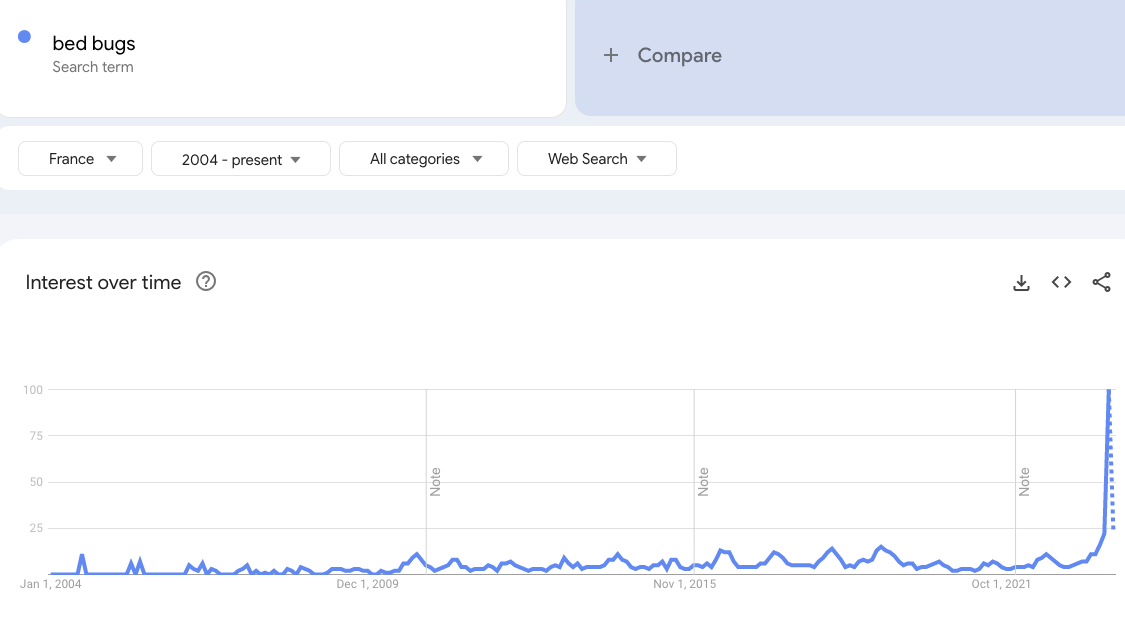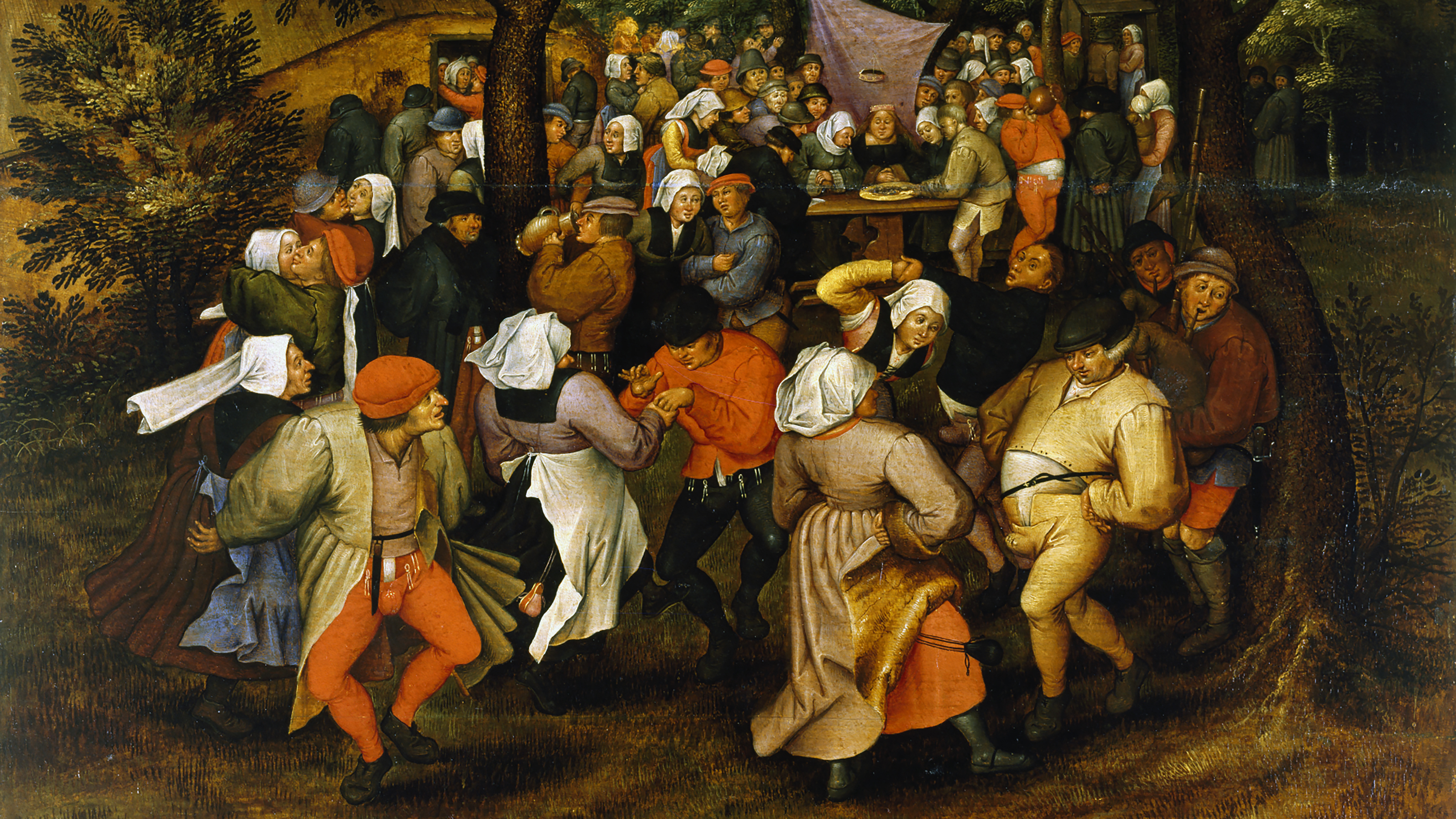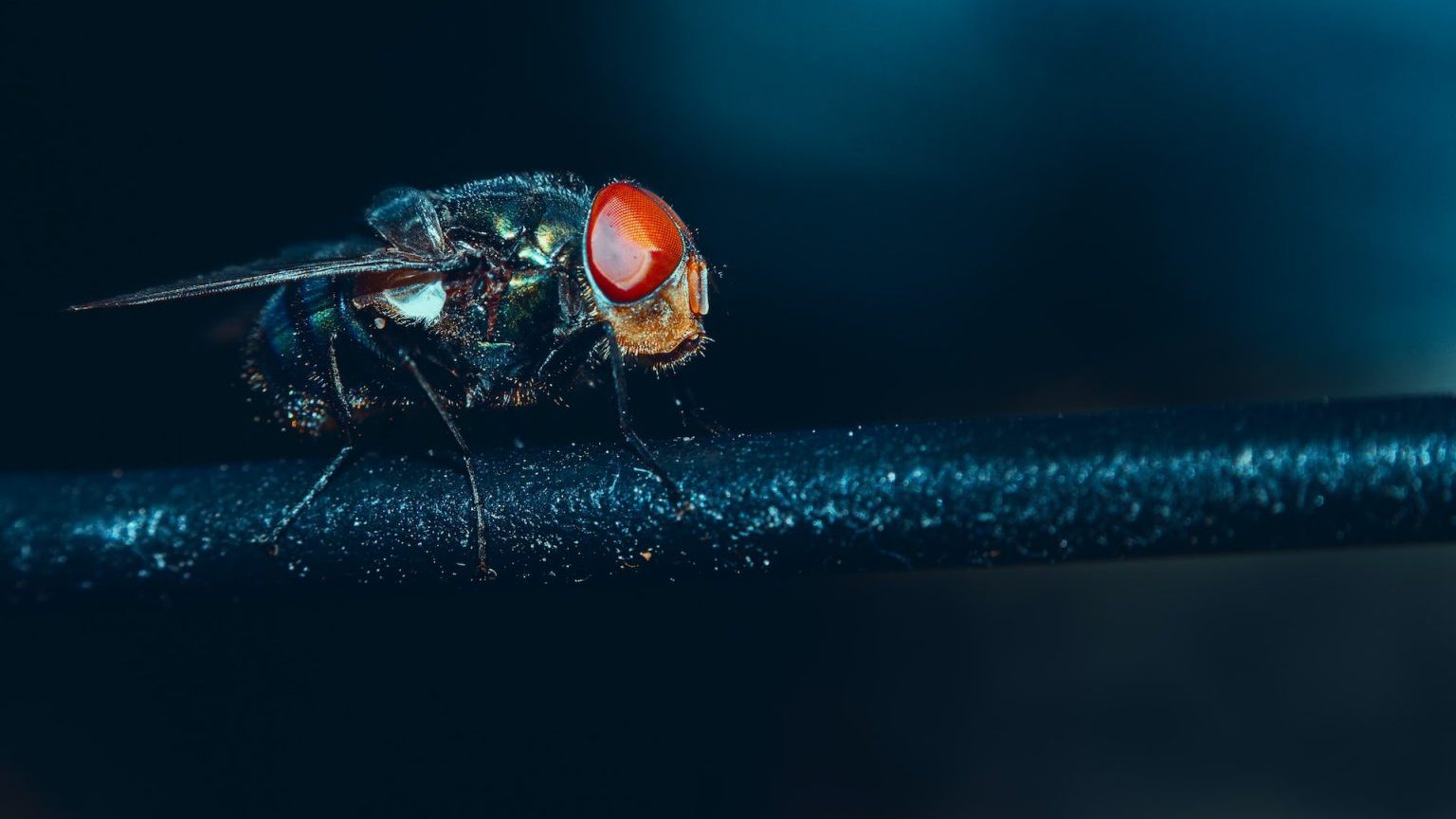The French have lost their minds over bed bugs

- In October, many people in France became convinced their country was infested with bed bugs. They saw the parasites everywhere, called exterminators in droves, and called for government action.
- But it appears that public panic far outstripped the bugs’ actual prevalence. While their population may have slightly increased over last year, there was no drastic spike in numbers.
- The instance appears to be a textbook case of a media-fueled social panic, where a group of people reacts negatively and in an extreme or irrational manner to a situation.
In October, the French collectively freaked out over bed bugs. Social media erupted with supposed pictures of the parasites in cinemas, trains, and subways. Pest control agencies, exterminators, and owners of bed bug-sniffing dogs were inundated with panicked calls. Politicians breathlessly demanded rapid government action. Of Paris, uncritical media reports declared that the “entire city is infested with bed bugs.”
Google Trends data shows the mass paranoia in chart form.

The thing is, it doesn’t appear that the country’s bed bug “problem” warranted such a swift and sudden panic, which seemed to have started with a few social media posts that went viral. The insects’ population didn’t erupt overnight. Instead, the French were likely gripped by a social panic.
An overreaction?
Dr. Robert Bartholomew is a sociologist specializing in mass hysteria and social panic. He teaches at the University of Auckland.
“What has been reported in Paris looks like something from a Grade B monster movie,” he told Big Think. “Going by press accounts, you would think they were everywhere — and that is not the case.”
Most French are not bed bug experts, and are likely mistaking ticks, carpet beetles, or some other creepy crawly for bed bugs, Bartholomew added.
Michael F. Potter, an emeritus professor of entomology at the University of Kentucky, knows exactly what bed bugs look like.
“Adult bed bugs are reddish-brown, with oval, flattened bodies. Their coloration is similar to an apple seed although their size is closer to a lentil,” he described.
Like vampires, bed bugs feast on blood and avoid the light, spending their days hiding in mattresses, box springs, bed frames, and headboards. At night, they crawl to their unsuspecting, sleeping victims and gorge themselves on blood for three to ten minutes, then scurry back to their cozy crevices. Bed bugs don’t transmit diseases to humans, and their bites are painless. The nips can leave red, itchy welts, however.
Relative to human pests like mosquitoes, ticks, and fleas, bed bugs are rather innocuous. But the fact that they covertly invade your bed — a place of privacy, comfort, and safety — to suck your blood as you sleep makes them uniquely unsettling.
Their stealthy, squirm-worthy reputation undoubtedly fueled France’s collective anxiety.
“There is a real psychosis,” Jean-Michel Bérenger, an entomologist at Mediterranean University Hospital Infection Institute in Marseille, told the New York Times. “This is the first time people have called to ask me to come to their home to check for bedbugs when they haven’t been bitten, they haven’t traveled, but they are afraid they have them since they saw things on the internet.”
According to a representative of the bed bug canine detection agency ATN, two-thirds of calls to exterminators during the present period of panic are quickly dismissed. Callers think they’ve got a bed bug infestation, but they really don’t. Moreover, many of the posts on social media depict insects that clearly are not bed bugs. France’s Transport Minister Clément Beaune said in early October that of all of the bed bug reports that were checked “zero are proven.”
“In the past a bus traveler may have sat next to one and not paid much notice. But now, Parisians are hyper-aware of any bug, especially while on public transport and in public places like the cinema – and low and behold, people are seeing them everywhere,” Bartholomew explained.
As Brooke Borel, author of Infested: How the Bed Bug Infiltrated Our Bedrooms and Took Over the World, recently reminded readers in an article at Scientific American, there was another bed bug panic in New York City back in 2010.
According to estimates from France’s national pest control trade association, there has been a 10% uptick in calls to exterminators this year, but this slight jump was expected. Bed bug populations crashed during COVID-19 when nobody was traveling, so a population spike was inevitable when things opened up. The insects also increase in prevalence when the weather is hot and humid and in places where people frequently travel. This year, France, and especially Paris, saw lots of both.
French fears of bed bugs were seemingly given credence earlier this year when a government report revealed that one in 10 households had bed bugs between 2017 and 2022. That might seem bad, but this rate is actually lower than in the United States.
Bed bug populations have grown significantly since the 1960s, when they were virtually eliminated in developed countries through the widespread use of the insecticide DDT. DDT is no longer widely utilized because of its negative, downstream environmental effects. At the same time, bed bugs have developed resistance to other insecticides. Global travel has also drastically increased in the prior decades, allowing bed bugs to hitchhike near and far. So the 21st century has been a bit of a renaissance for the parasites.
Bed bug fear in France is sure to abate as media sources change their frenetic focus, but it does seem to be spreading to South Korea. Local reports are full of stories about bed bug sightings in subways and people flocking to public health centers to have their insect bites checked.
Is it possible that Parisian travelers brought bed bugs to Korea? Certainly. But it’s more likely that the social panic has just moved on. Fear spreads much more easily than bed bugs.





